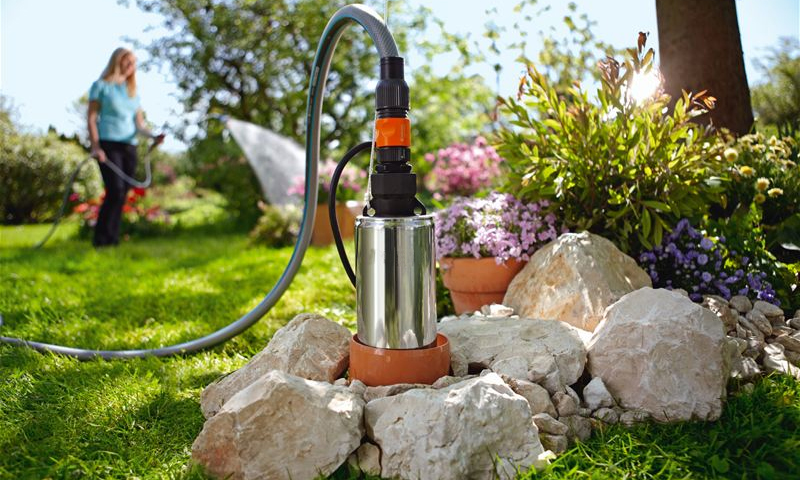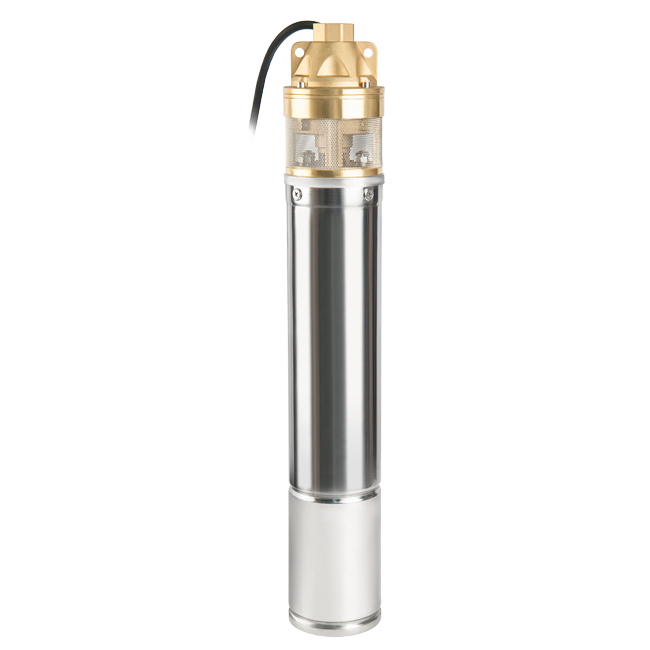The extraction of clean, healthy and tasty water from the bowels of the earth provides for the implementation of many activities. One of them is the well device, the other is the installation of a submersible pump. The installation of the latter is preceded by a scrupulous choice, which for various reasons is not so easy to make quickly and correctly. After reading the article, it will be easy to choose the manufacturer, calculate the pressure and determine between the centrifugal and vortex pump.

Content:
The best manufacturers of pumps for wells - which company to choose
Knowledge of the best manufacturers gives a chance not to make a mistake when choosing and not to buy low-quality goods. The following are companies that are trusted by well pump users.
1. Aquarius.
2. Vortex.
3. Gilex.
4. LIVHIDROMASH.
Following the best firms we give the most popular models. To read them and make a specific choice read rating of the best pumps for wells.
Types of pumps for wells
Centrifugal Submersible Pumps

The most popular submersible pump is a centrifugal submersible pump, which belongs to a dynamic type according to the principle of operation and the blade type, based on the force applied to the fluid.
Consists of the following elements:
1. Cylindrical housing;
2. Electric motor;
3. Suction chamber;
4. Impellers;
5. Shaft;
6. Safety net;
7. Flow channel;
8. Check valve;
9. Outlet
Located in a liquid medium, the unit sucks in water, using centrifugal movement with the help of wheels with blades, and then, under pressure, directs it through the discharge port to the pipeline.
Also involved in the work process:
1. A cable on which the cylinder is lowered through the hole in the casing;
2. Network cable;
3. Control unit with level sensors and pressure indicator.
In the course of operation, the cooling is performed with pumped water. The body in order to avoid corrosion is made of stainless steel or plastic.
Benefits:
- high performance: performance, efficiency and pressure;
- quiet operation - due to the location of the device;
- no overheating - cooling is performed by the pumped medium;
- impossibility of freezing - the water temperature at the depth practically does not change;
- long uninterrupted operation and ease of use;
- long service life - with high quality materials and assembly.
Disadvantages:
- different installation difficulties;
- the dependence of the efficiency of operation of the stable operation of the grid;
- relatively considerable price.
Characteristics make it possible to widely apply these models, both for private sector facilities and industry with agriculture.
Depending on the number of wheels (from 1 to 10 and more), the length of the device can step over 2.5 m, the power exceeds 5.5 kW, the weight “pull” - under 50 kg, and the head created - up to 400 meters.
Units with maximum data and cost a lot - more than 100 thousand rubles. Usually for household needs, indicators are selected much more "modest".
Vortex Submersible Pumps

The second most popular downhole pump is a vortex submersible pump, which is classified as a dynamic friction unit.
The structure includes:
1. Housing;
2. Engine;
3. Impeller with plates;
4. Shaft;
5. Water intake grid;
6. Pressure port;
7. Lower and upper flanges.
The essence of the operation is similar to the previous device.The only difference is that a tight-fit wheel has special blades, due to the presence of which additional turbulence is created, which significantly increases the water pressure.
Depending on the design of brass or bronze wheels with inclined or radial vanes, the devices are divided into open and closed vortex.
Since there is practically no gap between the working element and the walls of the case, special attention is paid to the cleanliness of the fluid when choosing - if the water has more than 10 g / m3 of sand, the device is not used, as it can quickly fail.
Benefits:
- increased head pressure;
- the possibility of pumping water from great depths;
- no noise, overheating and freezing;
- possession of self-priming ability;
- insensitivity to air in liquid;
- price availability of part of the models.
Disadvantages:
- low efficiency, usually not exceeding 50%;
- rapid wear, especially with a significant amount of sand;
- considerable cost - because of the assembly, which requires high accuracy.
Vortex submersible pumps are used in various areas and areas: for water supply of private houses, in fire extinguishing systems, for filling water towers, for watering gardens and vegetable gardens.
Submersible Screw Pumps

Following the first two most popular ones, there is a borehole pump - a screw submersible pump, which is a volumetric rotor type apparatus.
Main structural elements:
1. Housing;
2. Engine;
3. Filter mesh;
4. Shaft;
5. Screw;
6. Safety valve;
7. Pressure port.
The operation of the unit is based on the rotation of the screw (auger), which, after the ingress of water into the receiving chamber, directs it to the discharge port and further along the pipes to the consumer.
When operating this device, there are at least 2 features:
1. Substantial fluid contamination is allowed;
2. With the increase in revolutions, not head, but productivity increases.
In addition, screw machines are divided into another 2 types:
1. Standard, used at elevations up to ‒25 m for wells “on sand” with a relatively low flow rate;
2. Deep, which are able to pump water from artesian layers.
Benefits:
- ample selection options for technical characteristics;
- the ability to lift fluid from great depths;
- uniformity of water supply;
- insensitivity to pollution;
- lack of noise and vibrations;
- durability.
Disadvantages:
- mediocre efficiency values;
- high cost of deep models;
- relatively low popularity.
These screw pumps are used in household, industrial, and agricultural sectors - in many cases with additional purification from sand and impurities.
Vibratory submersible pumps

A downhole pump, called a vibratory submersible pump, is fundamentally designed differently than the 3 above-mentioned units - it has no rotating elements.
Vibrating submersible pump consists of the following elements:
1. Housing;
2. Core with coil;
3. Anchor;
4. Shock absorber;
5. Diaphragm;
6. Stock;
7. Piston;
8. Suction holes;
9. Discharge pipe.
The operation of the device is based on the reciprocating movements of the mechanism after the current is applied to the coil winding. In the process of magnetization / demagnetization, a vacuum is periodically created in the cylinder, after which water is sucked in through the valves with high frequency and fed to the place of consumption through the outlet fitting.
Such devices pump liquid from shallow depths, while capable of producing a pressure of up to 60 m. Against the background of many pluses inherent in this apparatus, a significant minus is allocated - this is a vibration that can eventually destroy the barrel and erode the clay bottom.
Benefits:
- simplicity and reliability of the design;
- high maintainability;
- universality of use;
- no problems with cooling and noise reduction;
- ease of operation;
- low cost.
Disadvantages:
- small productivity;
- the possibility of silting - as a result of vibration;
- danger of destruction of the well.
Such a device is better to use as a well.In the role of downhole suitable for irrigation of agricultural land. It can also be used for domestic purposes - in such cases, the fence should be arranged in layers with coarse-grained fractions of stone and (or) sand - clay and loam are excluded.
Pump selection options for a well

Aquifer characteristics
The characteristics of the aquifer include:
1. depth - dynamic, changing depending on various factors, and static;
2. flow rate - the amount of fluid entering the fence per unit of time;
3. the type of soil in which the water is located.
After completing the work, a passport is compiled with all the necessary data.
Water demand
In the case of a private house, water demand is calculated - it should not exceed the flow rate. When determining it, the number of residents and sanitary appliances, as well as the mode of operation + the amount of liquid for irrigation, is taken into account.
This parameter, depending on the situation, is significantly different, therefore, with an eye to the norms, it is better to determine it based on consumption habits - throughput under similar conditions may require both 2 and 20 m3 / h.
Head pressure
A required parameter is the pressure that can be read in atmospheres or in meters of water column — the ratio between these values is approximately: 1 to 10.
With its simplified calculation are summarized:
1. Geometric lift height (vertical distance from the pump to the highest parsing point);
2. Losses in horizontal areas (10 m equated to 1 m)
3. Free pressure at the mixer (from 2 or 3 m).
The degree of entry into the casing
The device must enter the casing with a lumen of 1 ... 3 cm. The most common diameters of the latter are 10, 13 and 15 cm. Accordingly, pumps are available in 3ʺ, 4ʺ, more than 4ʺ.
Power
Power significantly affects the cost of the unit, - an indirect indicator, depending on the pressure and flow.
Which pump to choose well

1. When choosing a pump for agriculture, graphs are built according to which the most suitable unit is determined — you can do this work yourself (if you have knowledge) or with the help of designers.
2. You should always pick up the device with a small margin, but no more than that - every extra kilowatt will negatively reflect on the cost.
3. In most cases, you can buy a centrifugal model; at high purity of water vortex modification is well suited; if the liquid is not of the best quality, a screw version is suitable.
4. Vibrating device is more suitable for wells - if necessary, it can be used as a well, but you need to remember that such a pump can be heavily silted.
How much does a well pump cost

1. Centrifugal - Aquarius BTsPE 0.5-50U: immersion - 50 m; head - 75 m; productivity - 3,6 m3 / h; power - 1,14 kW. 8.6 ... 12.4 thousand rubles.
2. Vortex - Vortex CH-100 V: immersion - 35 m; head - 100 m; productivity - 2.4 m3 / h; power - 1,1 kW. 6.0 ... 7.2 thousand rubles.
3. Screw - GELEX Water cannon PROF 40/75: immersion - 30 m; head - 75 m; productivity - 2.4 m3 / h; power - 0.67 kW. 8.5 ... 13.5 thousand rubles.
4. Vibration - LIVHIDROMASH Malysh-M BV 0.12-40: immersion - 3 m; head - 60 m; productivity is 1,5 m3 / h; power - 0,24 kW. 1,4 ... 1,9 thousand rubles.
It will be interesting to friends too







